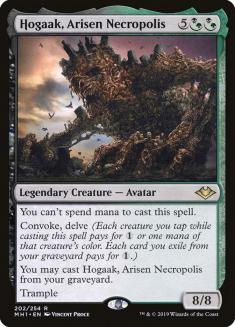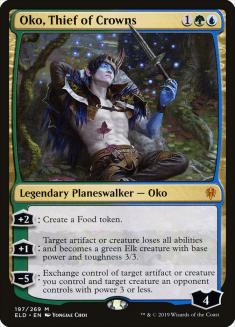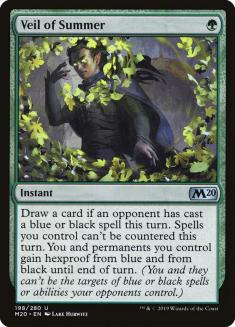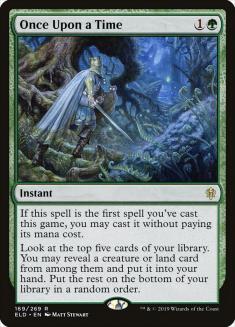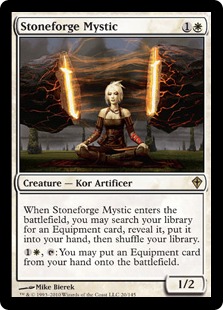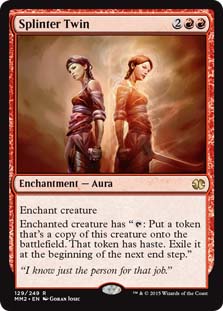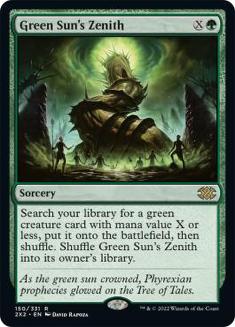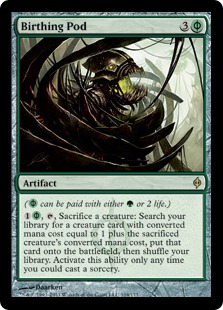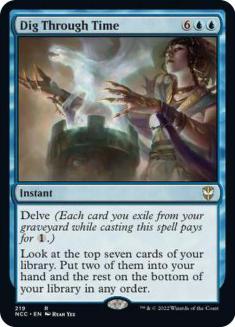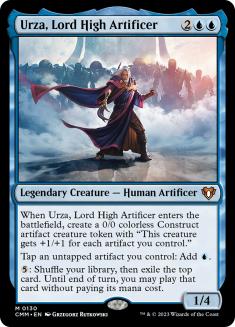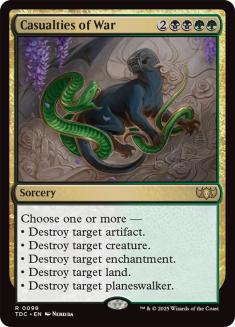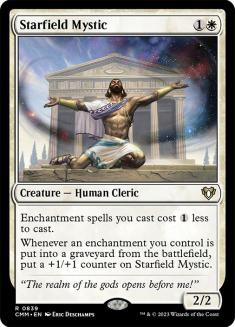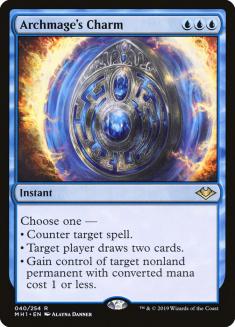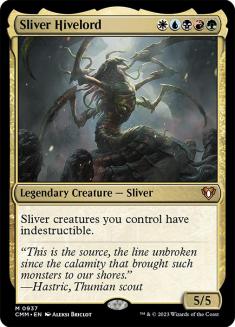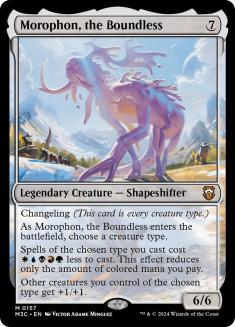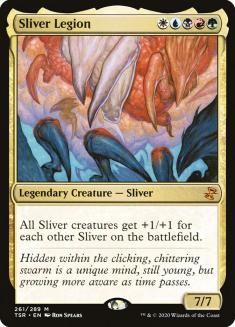Early last week, Wizards of the Coast (WotC) announced that their approach to the Banned and Restricted list would be undergoing some pretty major changes. Instead of announcing bans and unbans on a regular schedule, WotC will “no longer be making a commitment in advance to when the next B&R update will be.” Their announcements will still always be on Mondays, but we may or may not be given advance notice about whether any given week will contain a B&R update or not. In 2020, we might get several B&R changes in a month or we might not hear from WotC for months on end.
I’m not going to spend much time re-hashing the pros and cons of this change. In their announcement, WotC stated that the reason for their decision was fairly simple: when a format is broken, people stop showing up to events, and that is unacceptable. They acknowledge that ditching a strict B&R schedule will inconvenience people who buy into a deck right before getting blindsided with a ban, but to them it is a necessary sacrifice. After a year in which we had two formats that were pretty much unplayable for several weeks as we waited for WotC to ban the correct cards, I can’t really blame them.
This is where I come in. B&R changes are a pretty big deal in the world of Magic finance, and that navigating them correctly is a crucial skill to develop. If you’re a speculator, getting stuck holding the bag on a banned card is one of the biggest profit-killers out there. On the flip side, guessing right on an unbanned card (or a previously underutilized card that benefits from a ban or an unban) can be wildly lucrative.
This isn’t just about the speculators, though — we all need to figure out what to do about WotC’s new approach to the B&R list. When Oko, Thief of Crowns and Nexus of Fate were banned in Pioneer last week, my Twitter timeline was full of despondent Magic players who were totally blindsided by the decision. Some of them hadn’t even received their copies of the newly banned cards in the mail yet, while others had only managed to get in a couple of games before having to shelve their new deck forever.
I can’t prevent you from getting blown out by a B&R decision in the future, but I can help you develop a new approach to B&R finance that should help mitigate risk and maximize value now that WotC has totally changed their approach. Let’s begin, shall we?
When to Worry About a Banning—And When Not To
Some bans are obvious. We all knew that Hogaak, Arisen Necropolis was getting banned in Modern, and we all knew that Oko, Thief of Crowns was getting banned in Standard. I suppose there was a small chance that WotC might have tried to ban around those cards, but even that decision would have led to a vastly different format and a reduction in play for those two cards. Thus, acting as if their bans were inevitable was the right call.
Many other bans are not as obvious. Nexus of Fate was putting up some pretty solid numbers in Pioneer, but it didn’t seem all that oppressive yet. The format wasn’t being pulled into a black hole with Nexus of Fate at the center, and the deck was beatable if you planned for it. There was a solid case for Nexus to get the axe regardless — WotC certainly thought so, at any rate — but you could have also made a case that Pioneer needed time to adjust, that it was just one powerful strategy among many, and that it was providing the format with some necessary diversity.
It would be simple for me to sit here and declare that you should sell every card that might even be slightly at risk of a ban, but that negates the reality of the situation. Cards like Nexus of Fate often rise in price right up until they’re banned, and nobody wants to sell their set of hot new format staples “just in case,” only to have to re-buy them for twice as much a month later.
That’s why it’s important to get a sense of what WotC looks for when they ban cards. Living in fear isn’t the right decision, but you also want to avoid getting blindsided by a ban. Here are the signs I look for when I’m trying to decide whether or not to sell a card prior to an expected banning:
- Does the card enable a deck that’s utterly dominant despite the format having had a chance to adapt? This is the easiest criterion to figure out, and it applies to most of the big bannings over the past few years — Oko, Hogaak, Field of the Dead, Aetherworks Marvel, etc. If you could see a ban coming, chances are it fits into this category.
- Is the card a cheap enabler that fits into all sorts of decks and reduces format diversity? This is where we get bans like Ponder, Once Upon a Time, etc. If there’s basically no cost to playing an enabler that streamlines a bunch of unfair or somewhat-fair decks, WotC tends to want it gone.
- Does the card create play patterns that WotC doesn’t think are fun? This is subjective, of course, but WotC is a lot freer with the banhammer when a card is enabling a deck that doesn’t really feel like Magic in the traditional sense. This is why storm cards, dredge cards, Nexus of Fate, etc. are rarely given the benefit of the doubt.
- Can you cast the card without paying its full mana cost? WotC tends to get into trouble whenever they give folks the ability to cast the card without paying a fair mana cost, and they also tend to be aggressive in banning these cards when they are inevitably abused. Hogaak, Leyline of Abundance, and Once Upon a Time are the most recent offenders, but the B&R list is littered with plenty of others.
- Does the card completely upend an established eternal metagame? This criterion doesn’t really apply to Standard, where WotC encourages format turnover, but they don’t like it when a card like Wrenn and Six comes along and warps the Legacy metagame around it. If a new card enables a single new deck in Modern or Legacy, WotC generally considers that a victory. If it enables several new decks while negating half the field, they’ll look a lot closer at banning that card.
- How loudly are people complaining about the card? The court of public opinion shouldn’t hold too much sway over WotC’s B&R decisions, but it does matter. WotC wants to avoid situations where tournament attendance dips due to the poor health of a format, so if people are skipping out on MagicFests because of a certain card, they’re going to at least consider banning that card. This doesn’t mean that a bunch of angry folks on Reddit can get a card banned by themselves, but cards that draw a lot of ire are still more likely to get banned than cards that nobody is talking about.
The Pioneer bannings have more or less stuck to these six criteria, except with a hair trigger that WotC doesn’t use on their more established formats. Since WotC didn’t give us an initial Banned List for Pioneer, they decided to ban things far more aggressively than they would have had the format been around for a while. WotC will likely do away with their hair-trigger bans in 2020, and we should see a more measured approach to their intervention in Pioneer.
So yeah. If you’re worried about a card getting banned, the actual timing of that decision matters less than you might think. Look at the metagame, check the list, see if the card matches up with one or more of these criteria, and then prepare accordingly.
What Cards Might Get Banned Early in 2020?
I don’t see any likely offenders in Standard right now, but that might change when Theros Beyond Death is released. The current Standard metagame is healthy, with two very different decks — Jund Sacrifice and Jeskai Fires — sitting atop the highest tier. Simic Ramp, Simic Flash, Golgari Sacrifice, Golgari Adventures, and Izzet Flash are all quite viable as well.
It’s possible that something in Theros Beyond Death will push either Jund Sacrifice or Jeskai Fires over the edge into utter dominance, but I doubt it. All of the decks in Standard right now have their strengths and weaknesses, which is how it should be. Hooray for Standard finally being good!
Over in Modern, I sense a potential reckoning on the horizon. According to MTG Goldfish, the most-played card in Modern right now is Lightning Bolt—so far, so good. Unfortunately, the second- through fourth-most-played cards in the format are all 2019 mistakes: Veil of Summer; Oko, Thief of Crowns; and Once Upon a Time. All three of those cards are banned in both Standard and Pioneer right now. Will Modern be next?
Let’s look at our criteria. The Modern metagame doesn’t have a single dominant deck that’s impossible to beat right now, but that’s the best thing I can say this trio of mistakes and the influence they’ve had on the format. They’ve absolutely upended an established eternal metagame, and you have to go pretty far down the tier list before you find a deck other than Eldrazi Tron that’s not running both blue and green. Oko has been shoehorned into a bunch of established strategies, and Once Upon a Time and Veil of Summer are both doing the same exact things that got them banned in both Standard and Pioneer.
The social landscape is also bad for Oko, Once Upon a Time, and Veil of Summer in Modern. We’ve all seen these cards wreak havoc upon multiple formats at this point, and community interest in Modern has dipped over the past few months. You can probably make an argument for any of these cards being allowed to stick around in a higher-powered format like Modern, but I doubt WotC wants them to remain a drag on tournament attendance.
My guess? All three cards are gone by mid-February at the latest.
What Cards Might Get Unbanned in 2020?
Guessing right on a card getting unbanned in Modern is a pretty big deal. Stoneforge Mystic jumped from $40 up to $80 when it was unbanned last year, and it was only one in a long line of cards that would have generated you a pretty sweet profit if you’d been holding through the unban. Bitterblossom; Ancestral Vision; Jace, the Mind Sculptor … even Wild Nacatl and Bloodbraid Elf surged in price before eventually tailing off again. These cards were among the most lucrative spec buys in all of Magic history.
Back when there were only a couple of B&R announcements each year, potential unban targets would slowly start to creep up in price as announcement day approached. Selling Stoneforge Mystic into the pre-announcement hype and then buying it back a few months later was almost a cottage industry, and I definitely played that game with Jace a few times as well. This was one of the safest ways to make money every year, and I loved it.
Unfortunately, I don’t think it’ll happen much anymore. B&R talk used to dominate the community conversation for a few weeks leading up to the big announcements, and that hype dissipated a bit when WotC increased their frequency. Now that announcements will be mostly unscheduled, it’s possible that there won’t be any cycle of unban hype at all. We may just wake up one day in March and bam — Splinter Twin is legal in Modern again.
Or perhaps I’m underplaying the line in WotC’s announcement where they say, “We’ll do what we can to give advance notice if we’re able.” It’s possible that one day in March, WotC will tell us that they’re thinking of making some changes to Modern as part of the following week’s announcement. Cue up a week of fevered speculation and price spikes.
At any rate, buying cards with the potential to be unbanned in Modern is still a safe bet. You may not get the chance to sell into the pre-announcement hype, but you can still make out like a bandit if your spec choice actually does get unbanned at some point.
Here are some potential options:
The community is pretty solidly split on whether or not Splinter Twin can come off the Modern banned list, but that was also true for both Jace, the Mind Sculptor and Stoneforge Mystic. Splinter Twin is also a fan favorite, which means that WotC is constantly inundated with requests to unban it. That doesn’t mean that they’ll actually do it, but it does mean that they’ll probably at least continue to evaluate the possibility of setting it free. At any rate, it’s somehow one of the less broken cards on the list right now.
A Green Sun’s Zenith unban would likely have come in conjunction with a ban to Dryad Arbor, but I can see WotC choosing to throw green mages a bone when the inevitable ban of Oko, Once Upon a Time, and Veil of Summer comes down. WotC likes to give something back when they take something away, and this could be an option.
As with Splinter Twin, Modern has come a long way since the days that Birthing Pod was dominating the format. It’s probably still good, but it might not be utterly broken anymore. Birthing Pod is the other card I’d consider giving back to green players as a consolation prize once Oko and friends are banned, and whether it happens in 2020 or not, I expect it to end up being legal in Modern again at some point.
Most of the other cards on the Modern B&R list are either not financially relevant (Preordain) or are far too powerful to be set free (Blazing Shoal, Hypergenesis). With so many cards having left the Modern B&R list over the past few years, I’m not sure there are that many good specs left. I’d definitely have all three of the above cards in my collection, though. I’d bet one of them is let loose in 2020, just like Stoneforge Mystic was in 2019 and Jace, the Mind Sculptor was in 2018.
Is It Safe to Buy Into Pioneer Yet?
Most of us are feeling (understandably) burned by some of WotC’s recent B&R decisions, which have been quite plentiful during the second half of 2019. I suspect that this will cause quite a bit of anxiety heading into 2020, with folks worried that their new favorite deck will be next on the chopping block.
But is this anxiety justified? 2019 was a bit of a special case — not only did R&D get too rowdy with some of their Standard designs, but they released their first-ever direct-to-eternal set and created a brand-new format where the player-based was essentially tasked with beta testing the initial Banned List. WotC has said that they will pull way back with Pioneer bannings after the new year, and I doubt we’ll be getting a follow-up to Modern Horizons this quickly. Odds are, 2020 will have significantly fewer bans than 2019.
This should hold especially true for Pioneer. WotC has already banned nearly all the cards on my watch list, and the next things to go would be utility spells like Thoughtseize or Dig Through Time. Even if these cards are banned, the overall scope of the metagame is unlikely to shift all that much. At this point, it’s actually fairly safe to buy into Pioneer.
Unfortunately, we’ve also hit the point where a lot of people are afraid to buy into Pioneer because of the recent bannings. Last week’s banning hit especially hard, and that was just the latest in a series of brutal bannings that came down all season long. I can only imagine someone looking at the current metagame and wondering how they can justify picking up Azorius Control when all the previous best decks in Pioneer were immediately smacked with the banhammer, costing some of us a significant amount of time and money.
But at this point, it really does seem like WotC is done making major moves in Pioneer. What do you even ban if you want to nerf Azorius Control? The deck only runs two copies of Dig Through Time, and I can’t see them targeting a card like Supreme Verdict or Teferi, Time Raveler unless the deck really becomes oppressive.
Planeswalkers (8)
Lands (25)
Spells (27)

The same holds true for a lot of the other top decks in Pioneer right now. WotC already banned the most oppressive card in Mono-Black Aggro, and there’s nothing in either Izzet Phoenix or Gruul Aggro that seems overpowered at the moment. That could always change, but this is the first time I’ve been able to look at the Pioneer metagame and feel like it’s close to stable.
The stability of the Pioneer metagame isn’t reflected in the format’s price tag yet, though. Because people are still so scared of future bannings and due to the sluggish market during the holiday season, Pioneer prices have been fairly flat since the Oko and Nexus of Fate bannings. This gives us a pretty stellar buying window that almost nobody seems interested in taking advantage of right now. If you’ve got a little extra cash, I recommend doing so.
How I’m Changing My Approach to Bannings in 2020
Since bannings can come at any time, I’m going to be a lot more aggressive in moving on from cards that seem likely to get hit with the banhammer. If a specific card or deck pings one of the ban risk criteria I established earlier in the article, I’m going to seriously consider selling ASAP. The same is going to hold true for other staples in those affected decks, especially if they’re integral in a combo that seems likely to get banned.
That said, I’ll try to walk the narrow tightrope between being aggressive and playing scared. I don’t want to fall into the trap of assuming that every good card will get banned, or I would have moved on from cards like Teferi, Time Raveler and Urza, Lord High Artificer well before they hit their 2019 peaks and missed out on some pretty sweet profits. That’s the key: identifying which cards are stifling fun and innovation in a given format, and which are merely overpowered.
Of course, this isn’t all that different from what we’ve always had to do before any given B&R announcement. The real difference moving forward is that ban analysis has to become a more constant process in 2020. We can’t wait until the week before a potential banning to think about this stuff — we must try to anticipate when WotC is going to act as well. There are some decisions that will be nearly impossible to predict — a big Modern unbanning, for example — but we should be able to predict a major banning in Pioneer, Modern, or Standard more often than not. At the very least, I’ll be monitoring this stuff incredibly closely heading into 2020, and I’ll do what I can to keep you all updated.
This Week’s Trends
The holidays are upon us, and the Magic market is as cold as I’ve seen it all year. Even though the current Standard format is quite good, large swaths of the community seem to have responded to Oko by saying, “Eh, let me know when the next set comes out.”
The biggest Standard gainers of the week were Casualties of War and Starfield Mystic, both of which jumped about a dollar since last we talked. Casualties of War has continued to cement its status as one of the pillars of Standard, and it’s now being played as a four-of in Jund Sacrifice, the format’s most popular deck. Meanwhile, people seem to have caught on to the fact that Starfield Mystic is an obvious plant for Theros Beyond Death, and they want to get in before preview season kicks into high gear. I called it as a buy in last week’s article, alongside several other cards that you should pick up before Theros is released.
I’m surprised I didn’t see more Modern spikes as a result of the Star City Games Players’ Championship, but there simply isn’t a lot of interest in the format right now. Between Pioneer, the holiday season, and the dominance of Oko, a lot of people are giving Modern a pass right now.
If you’re looking for a sexy new Modern spec, I recommend Archmage’s Charm. Bant Urza took down the Players’ Championship, and the deck looks incredibly well-positioned in the current Modern metagame. Sam Black and Autumn Burchett have both been tweaking it a bit in recent days, and the addition of Archmage’s Charm seems to have really given it a new gear. Check out Autumn’s article from last week if you haven’t yet.
At any rate, I was shocked to see that Archmage’s Charm was still readily available on StarCityGames.com for less than a buck. I bought myself a couple of sets, and I suggest you do the same. Modern Horizons cards have lots of upside, and control cards tend to spike pretty hard when they finally find a home. Even just a jump from $1 to $5 would be a nice profit, but there’s even more room to run if you’re lucky. This is one of the best spec opportunities I’ve come across in a while, and it’s only available because people aren’t paying much attention to Modern right now. That will change at some point soon, and you should take advantage while you still can.
Speaking of which, here’s yet another reminder that late December is the best time of year to pick up Modern staples. Cards like Snapcaster Mage, Stoneforge Mystic, Wrenn and Six, and Liliana of the Veil are all at or close to their yearly lows, and it’s a buyer’s market for pretty much everything Modern-related at the moment. I don’t believe that Modern is dead or dying, and I expect a strong rebound in 2020. Now is the time to buy.
There weren’t many major gainers this week, but a trio of five-color Commander cards did see minor spikes: Sliver Hivelord; Morophon, the Boundless; and Sliver Legion. They’re gaining in value due to the Kaleidoscope Killers Secret Lair, which proved quite popular among the Commander player base. It’s possible that some of these cards will continue to gain value into the new year, but with that particular Secret Lair drop now firmly in the past, I wouldn’t spend too much time worrying about it. You can sell your five-color cards into the hype cycle if you want, but the spikes are fairly small so I’m probably not going to bother.

